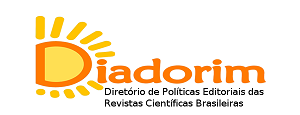TERRITORIAL DISPUTES IN GILBUÉS-PI
AGRIBUSINESS DEVELOPMENT AND ENVIRONMENTAL DEGRADATION
DOI:
https://doi.org/10.20873/rtg.v5n8p29-52Keywords:
Territorial conflicts, Gilbués-PI, Agribusiness, Ambiental degradationAbstract
In the municipality of Gilbués, there are areas with intense processes of environmental degradation, but other territorial portions present an accelerated development of agribusiness. Thus, the objective of this work is to analyze its territorial dynamics, emphasizing the dichotomies in the context of landscape transformation and land occupation. The research was based on bibliographical review, field work, elaboration of thematic maps built from remote sensing and geoprocessing techniques. The temporal analysis (1987-2009) indicated changes in the situation in Gilbués. The research results reveal, for the study area: a) occurrence of areas with fragility and environmental degradation in the central-south portion; b) expansion of agriculture in dense cerrado areas in the northern portion; c) replacement of vegetation cover by extensive cultivation fields (soybeans, corn and cotton) and pasture; d) increased productivity; e) expansion of exposed soil and sand areas. Thus, the municipality of Gilbués is characterized by territorial conflicts, in which the population lives with two phenomena (soil degradation and agribusiness) that influence the socioeconomic configuration and favor landscape transformations in southwestern Piauí.
References
ALVES, V. E. L. - A Mobilidade sulista e a expansão da fronteira agrícola brasileira. AGRÁRIA, São Paulo, Nº. 2, p. 40-68, 2005.
BARROS, J. C.. Gurguéia: espaço, tempo e sociedade. Teresina: Halley. 2009.
SALES, M. C. L. Estudo da degradação ambiental em Gilbués-PI: Reavaliando o “núcleo de desertificação”. São Paulo, USP. Dissertação de Mestrado - Geografia. 1997
Downloads
Published
How to Cite
Issue
Section
License
Revista Tocantinense de Geografia does not remunerate any author for the publication of their texts. The contents of the texts published in this journal are the responsibility of the authors.








.png)












